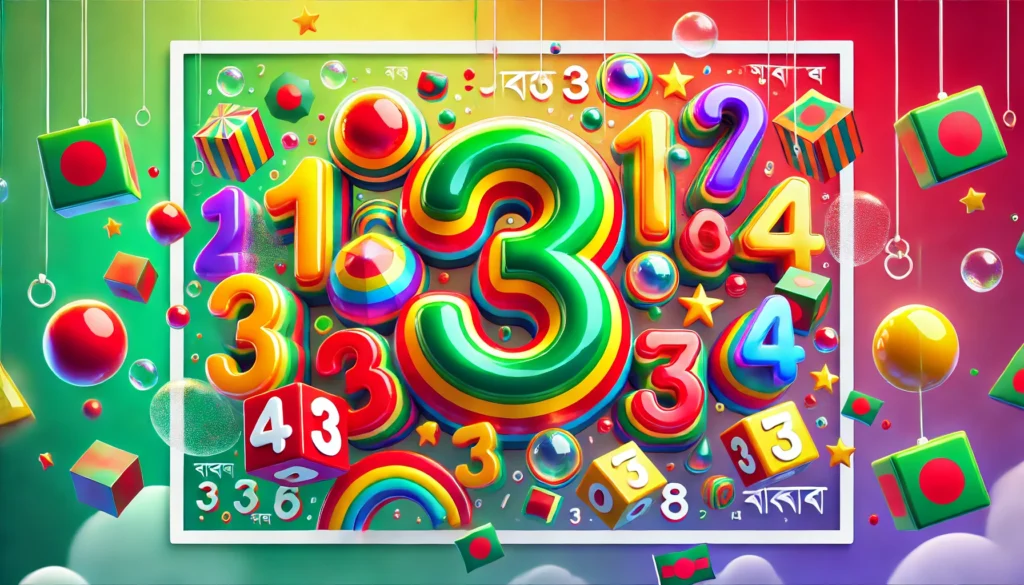Numbers from 1 to 100 in Bengali: Importance and How to Learn
Learning numbers from 1 to 100 in Bengali is a fundamental aspect of language acquisition. Understanding these numbers not only helps in daily communication but also forms the basis for more advanced mathematical concepts. Whether you are a beginner or aiming to improve your Bengali skills, mastering numbers is essential. This article will explore the significance of learning numbers from 1 to 100 in Bengali, provide tips on how to effectively learn them, and offer some examples to facilitate your learning process.
Importance of Learning Numbers in Bengali
Numbers play a crucial role in various aspects of life, from telling time to discussing quantities and prices. In Bengali, numbers are used in everyday conversations, shopping, making appointments, and more. By grasping numbers from 1 to 100, you enhance your ability to engage with native speakers, navigate daily tasks, and develop a deeper understanding of the language.
Moreover, understanding numbers in Bengali is beneficial for those interested in Bengali literature, history, and culture. It opens doors to comprehending numerical references in texts, dates, and significant events. Overall, mastering numbers in Bengali is a stepping stone towards fluency and cultural appreciation.
How to Learn Numbers from 1 to 100 in Bengali
Learning numbers in Bengali can be an enjoyable and rewarding experience with the right approach. Here are some effective methods to help you grasp numbers from 1 to 100:
- Repetition: Practice writing and saying the numbers repeatedly to reinforce your memory.
- Visual Aids: Utilize flashcards or charts to visually represent the numbers and enhance retention.
- Listening Exercises: Listen to audio recordings of numbers being pronounced in Bengali to improve your auditory skills.
- Interactive Games: Engage in number-related games or quizzes to make learning fun and engaging.
By incorporating these methods into your learning routine, you can effectively internalize numbers in Bengali and progress towards proficiency.
Examples of Numbers from 1 to 100 in Bengali
Here are some examples of numbers from 1 to 10 in Bengali to kickstart your learning journey:
- 1: এক (ek)
- 2: দুই (dui)
- 3: তিন (tin)
- 4: চার (char)
- 5: পাঁচ (pach)
- 6: ছয় (chhoy)
- 7: সাত (shat)
- 8: আট (at)
- 9: নয় (noy)
- 10: দশ (dosh)
Practice these numbers regularly and gradually progress to higher numbers to build your proficiency in Bengali numerical vocabulary.
Remember, learning numbers from 1 to 100 in Bengali is a valuable skill that enhances your language abilities and cultural understanding. Approach the learning process with enthusiasm and dedication, and soon you will be confidently using Bengali numbers in various contexts.
| Number | Spelling | Listen |
|---|---|---|
| 0 | শূন্য | |
| 1 | এক | |
| 2 | দুই | |
| 3 | তিন | |
| 4 | চার | |
| 5 | পাঁচ | |
| 6 | ছয় | |
| 7 | সাত | |
| 8 | আট | |
| 9 | নয় | |
| 10 | দশ | |
| 11 | এগারো | |
| 12 | বারো | |
| 13 | তেরো | |
| 14 | চৌদ্দ | |
| 15 | পনেরো | |
| 16 | ষোল | |
| 17 | সতেরো | |
| 18 | আঠারো | |
| 19 | উনিশ | |
| 20 | বিশ | |
| 21 | একুশ | |
| 22 | বাইশ | |
| 23 | তেইশ | |
| 24 | চব্বিশ | |
| 25 | পঁচিশ | |
| 26 | ছাব্বিশ | |
| 27 | সাতাশ | |
| 28 | আটাশ | |
| 29 | ঊনত্রিশ | |
| 30 | ত্রিশ | |
| 31 | একত্রিশ | |
| 32 | বত্রিশ | |
| 33 | তেত্রিশ | |
| 34 | চৌত্রিশ | |
| 35 | পঁয়ত্রিশ | |
| 36 | ছত্রিশ | |
| 37 | সাঁইত্রিশ | |
| 38 | আটত্রিশ | |
| 39 | ঊনচল্লিশ | |
| 40 | চল্লিশ | |
| 41 | একচল্লিশ | |
| 42 | বিয়াল্লিশ | |
| 43 | তেতাল্লিশ | |
| 44 | চুয়াল্লিশ | |
| 45 | পঁয়তাল্লিশ | |
| 46 | ছেচল্লিশ | |
| 47 | সাতচল্লিশ | |
| 48 | আটচল্লিশ | |
| 49 | ঊনপঞ্চাশ | |
| 50 | পঞ্চাশ | |
| 51 | একান্ন | |
| 52 | বাহান্ন | |
| 53 | তিপ্পান্ন | |
| 54 | চুয়ান্ন | |
| 55 | পঞ্চান্ন | |
| 56 | ছাপ্পান্ন | |
| 57 | সাতান্ন | |
| 58 | আটান্ন | |
| 59 | ঊনষাট | |
| 60 | ষাট | |
| 61 | একষট্টি | |
| 62 | বাষট্টি | |
| 63 | তেষট্টি | |
| 64 | চৌষট্টি | |
| 65 | পঁয়ষট্টি | |
| 66 | ছেষট্টি | |
| 67 | সাতষট্টি | |
| 68 | আটষট্টি | |
| 69 | ঊনসত্তর | |
| 70 | সত্তর | |
| 71 | একাত্তর | |
| 72 | বাহাত্তর | |
| 73 | তিয়াত্তর | |
| 74 | চুয়াত্তর | |
| 75 | পঁচাত্তর | |
| 76 | ছিয়াত্তর | |
| 77 | সাতাত্তর | |
| 78 | আটাত্তর | |
| 79 | ঊনআশি | |
| 80 | আশি | |
| 81 | একাশি | |
| 82 | বিরাশি | |
| 83 | তিরাশি | |
| 84 | চুরাশি | |
| 85 | পঁচাশি | |
| 86 | ছিয়াশি | |
| 87 | সাতাশি | |
| 88 | আটাশি | |
| 89 | ঊননব্বই | |
| 90 | নব্বই | |
| 91 | একানব্বই | |
| 92 | বিরানব্বই | |
| 93 | তিরানব্বই | |
| 94 | চুরানব্বই | |
| 95 | পঁচানব্বই | |
| 96 | ছিয়ানব্বই | |
| 97 | সাতানব্বই | |
| 98 | আটানব্বই | |
| 99 | নিরানব্বই | |
| 100 | একশত |


